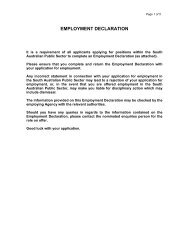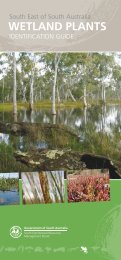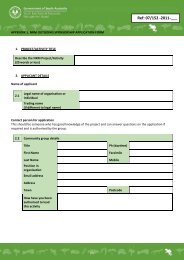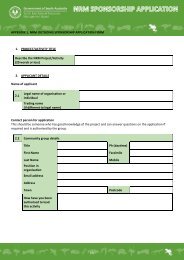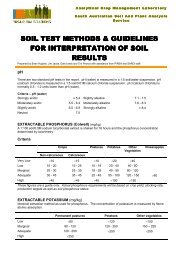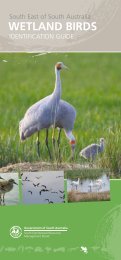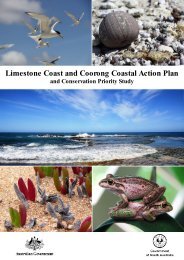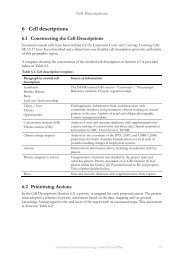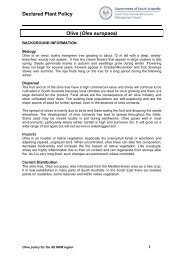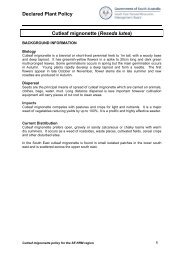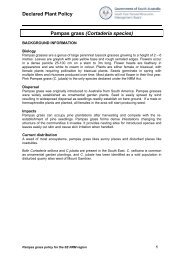Chapter 1 - Introduction - South East Natural Resources ...
Chapter 1 - Introduction - South East Natural Resources ...
Chapter 1 - Introduction - South East Natural Resources ...
You also want an ePaper? Increase the reach of your titles
YUMPU automatically turns print PDFs into web optimized ePapers that Google loves.
<strong>Introduction</strong><br />
1.5 Management Context<br />
This project sits within, or is related to, a number of on-going processes within the region; the<br />
diagram below attempts to indicate the principal elements of these processes.<br />
Commonwealth processes and State NRM Plan<br />
SE Biodiversity Plan<br />
SE NRM Plan<br />
Goals, Objectives, Values<br />
Coastal Conservation Assessment: Coastal data inventory; conservation<br />
and threat hotspots.<br />
Coastal Action Plan: Local and regional actions and priority.<br />
Targets<br />
Evaluation & review<br />
The SE coastal project aims to establish conservation priority of areas and places to support and<br />
inform the work of the SE NRM Board. This has been undertaken in two steps in defining<br />
priority:<br />
• the first step assembles data relating to biota, geology and heritage distributed throughout the<br />
region;<br />
• the second step looks at threatening processes impacting these features.<br />
The combination (see <strong>Chapter</strong> 5) gives a statement, in mapped form, which allows discussion of<br />
priority actions to achieve the goals of the NRM Board for its coastal regions: it is a decision<br />
support system.<br />
The whole of the process outlined in the flow diagram above may be said to encompass the<br />
elements of an ecosystem based management system 1 . This process has been described by Smyth<br />
et al 2003, and has been summarised below, with minor changes:<br />
1. Holistic Integrated Science<br />
Recognition that systems are open, complex and inter-active. Change in one system may<br />
impact others. Achieving management objectives involves considering cumulative impacts.<br />
The best available science must be used throughout the management process. Scientists<br />
must view impacts as cumulative and consider the ecosystem as a whole.<br />
2. Adaptive Management<br />
Sparse and incomplete knowledge requires management that can respond to change, in<br />
societal needs, and change in ecosystems some of which may have resulted from previous<br />
management actions. Management plans are a work in progress, and are able to respond to<br />
the results of monitoring key indicators. This is not a ‘try it and see’ approach, but a<br />
1<br />
See Smyth, et al 2003; Grumbine 1994.<br />
Limestone Coast and Coorong Coastal Action Plan 17



